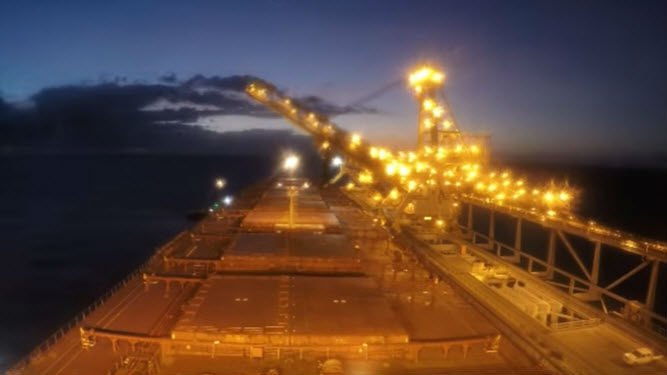Port Stocks and Politics Shaping Dry Bulk Fortunes

Analyst Maritime Strategies International (MSI) has forecast weak forward prospects for the dry bulk sector thanks to a combination of volatile trade prospects and political policy.
In its latest Dry Bulk Freight Forecaster MSI notes that Capesize spot earnings were surprisingly volatile in January, driven by strong demand for iron ore in China. However a significant proportion of these imports have translated into higher port stocks, which are 40 million tons higher than this time last year.
“January was a mixed month for the bulker market, though on the whole rates were not as bad as had been anticipated by MSI, despite a month-on-month fall for all but the Capesize benchmark,” says Senior Analyst Will Fray. “Indeed this year has been the first time since 2009 that January's average Capesize spot rates were higher than the preceding December.”
However Capesize demand weakened into February and spot rates have tumbled to just $4,500/day. The impact of demand weakness was compounded by an uptick in supply: January heralded a seasonal new-year spike in vessel deliveries, with 16 vessels delivered more than double the number scrapped.
MSI expects ore trade to be weak until May, keeping downwards pressure on earnings despite a marginal fall in the fleet size as demolitions more than offset deliveries. In MSI's short term outlook, Cape rates will remain below $8,000/day for the whole of the first and second quarters.
Panamax spot rates have been relatively strong, and as of early February are higher than all other benchmarks thanks in part due to robust U.S. coal trade and an increase in vessels ballasting from the Pacific.
“MSI’s short term forecast for Panamax earnings is tied to a highly uncertain outlook for coal trade this year, which depends on two key factors: Chinese government policy on the one hand (particularly with regards to domestic production), and the performance of Coal India on the other. However, anecdotal evidence from traders suggests stronger U.S. coal exports will continue for the next three months at least, and MSI is relatively more positive for Panamax spot rates,” says Fray.
MSI is less positive for geared bulkers over the next six months partly related to an oversupply in the Atlantic and lacklustre Pacific demand, most notably for minor ores including nickel. The impact of weaker demand on rates will be exacerbated by stronger supply of ships following a strong month of deliveries in January at numbers in excess of this time last year.
In January the government of the Philippines ordered the closure of half of the country’s nickel ore mines and although the impact will be minimal in the short term, the outcome of this process represents a downside risk to the MSI six-month view.
Simultaneously, the Indonesian government announced that it may permit the export of nickel ore once again, reversing a three-year old ban, but the impact on trade is also highly uncertain and MSI assumes a marginal fall for annual nickel ore trade as a result.
